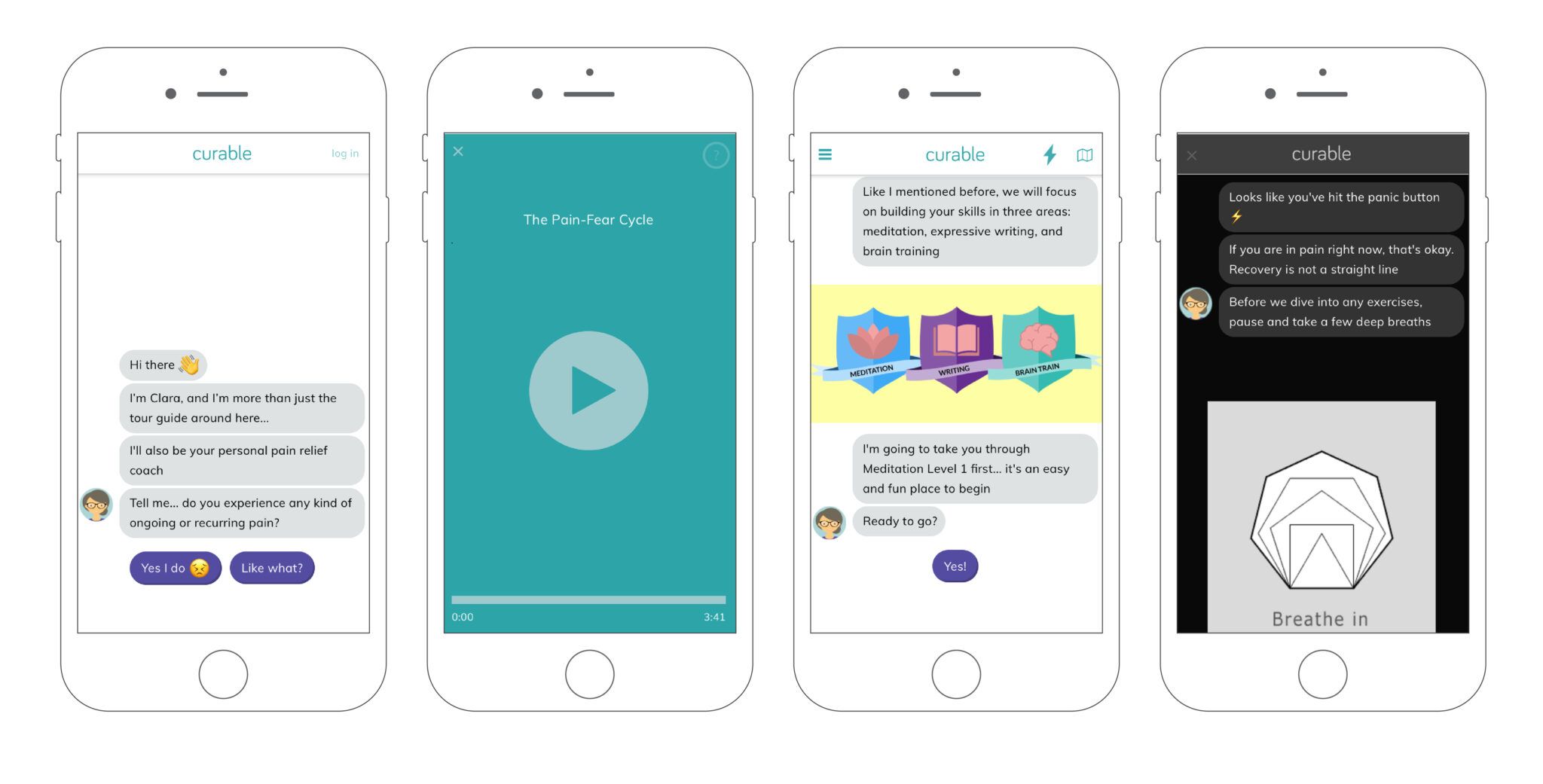App may change way patients, physicians approach chronic pain

DENVER — Curable started with 15 years of back pain and an openness to try whatever it took to make it go away, even if that meant reading a book.
What started as a herniated disk at age 19 led to years of chronic pain for chief executive John Gribbin, who at age 34 finally read a book at the recommendation of a friend about dealing with chronic pain not via surgery or medication but psychologically.
That book ultimately led to him changing the way he thought about his pain and led to its decrease. And when Gribbin found others who had used similar methods to dealing with chronic pain, they decided to bring it to the public via app.
SPONSORED CONTENT
The Denver- and Chicago-based Curable, which was made available globally Sept. 20, is a guided meditation and therapy app geared specifically for people who experience chronic pain.
“The science behind the type of therapy we provide is well-researched and well-established nowadays and is based in a biopsychosocial approach,” Gribbin told BizWest. “There’s a difference between acute pain and chronic pain. If you fall and hurt your hip, there’s acute pain in the hip due to tissue damage that occurred and is causing pain signals to go from that area to your brain. The body is designed to heal itself in about 6 weeks to 6 months, but if pain persists longer than three to six months it’s shifted from an acute to a chronic phase. And once pain becomes chronic, it becomes very complex.”
At that point, he added, there are other factors that come into play, like emotional and social ones, and the symptoms of pain become not a condition of the body but a condition of the brain.
“At that point, the only way to heal the pain is to address what is going on in the brain,” he said. “That’s the basis of the science that our program is based on.”
To help patients with chronic pain, Curable is an app that takes them through guided meditation, expressive writing and journaling, cognitive behavioral therapy to change the way they approach and think about their pain and, what Gribbin said might be the biggest component, education.
“Sometimes education alone can help people with chronic pain feel better, knowing what’s going on neurologically and in their body helps them,” he said. “It’s widely understood that educating chronic pain sufferers on how it works is helpful in alleviating it.”
To take users through the Curable mind-body approach to pain management is a smart coach named Clara. Clara is a chatbot that provides customers with prompts to take them through the process of working through the mental aspects of their chronic pain using text messages and audio recordings. Although Clara’s process and responses to users are based on a schedule of going through the program, future iterations are planned to be smarter, where Clara can collect data on users and cater the program to their specific needs and responses.
Although medical professionals and researchers are fairly certain that chronic pain happens in the brain, Gribbin said there are barriers to physicians recommending therapeutic approaches to their patients.
One of those barriers is communication, he said.
“To say to a patient that chronic pain is a brain issue risks the patient blowing back to the doctor with ‘are you saying that it’s all in my head?’,” he said. “It’s a very sensitive topic. But most doctors would go there if they believed they wouldn’t have a difficult conversation.”
Another barrier is a gap in what the doctor feels they can do next. There’s a training gap, Gribbin said, and separation between physical and mental health. When presented with a psychological issue, physicians may just recommend patients to a mental health professional or prescribe antidepressants.
Finally, a third significant barrier is access. Gribbin said there are a few doctors who are trained and know how to communicate the mental aspects of chronic pain, but that they are usually only available in certain metro areas and are specialists who are expensive. A multidisciplinary pain program at the Mayo Clinic in Minnesota for treatment very similar to what Curable does but in-person costs $40,000.
For those reasons, the Curable team is promoting the app as an affordable, simple way to start tackling all the facets of chronic pain, not just the physical ones. The app costs $12.99 a month, $60 for a year or $299 for a lifetime subscription. (The time differences reflect how long a person might need to go through the process; for some chronic pain illnesses there can be a lifetime of maintenance to make sure severe pain doesn’t return.)
So far, there are about 1,700 subscribers since the app launched its early versions in December. Now, with its global launch this week, Curable hopes to help between 50,000 to 100,000 customers in the next year manage their chronic pain. There are also hopes to begin hiring employees in the Denver-Boulder area.
The company is also partnering with Tor Wager, director of the Cognitive and Affective Neuroscience lab at the University of Colorado Boulder to recommend patients for a lower-back pain study that uses the same therapy the Curable app offers but by humans.
So far, most new customers have come via word of mouth from other users of the app or even from doctor referrals. Gribbin says the company’s marketing strategy going forward will likely include educating physicians about Curable as an option to prescribe to patients. The hope is to expose patients to the mind-body approach to dealing with chronic pain early on.
“The thing that inspired us with this company is so many people find their way to this type of therapy when they have reached the end of their rope,” he said, “when they’re desperate and nothing has worked. A big motivating factor for us is to move the time of first contact with this way up in the timeline. Doctors can offer this as a very safe first option, and if it doesn’t work then they can go on to drugs and surgeries. But we hope people can get exposure to this early on.”

DENVER — Curable started with 15 years of back pain and an openness to try whatever it took to make it go away, even if that meant reading a book.
What started as a herniated disk at age 19 led to years of chronic pain for chief executive John Gribbin, who at age 34 finally read a book at the recommendation of a friend about dealing with chronic pain not via surgery or medication but psychologically.
That book ultimately led to him changing the way he thought about his pain and led to its decrease. And…
THIS ARTICLE IS FOR SUBSCRIBERS ONLY
Continue reading for less than $3 per week!
Get a month of award-winning local business news, trends and insights
Access award-winning content today!
